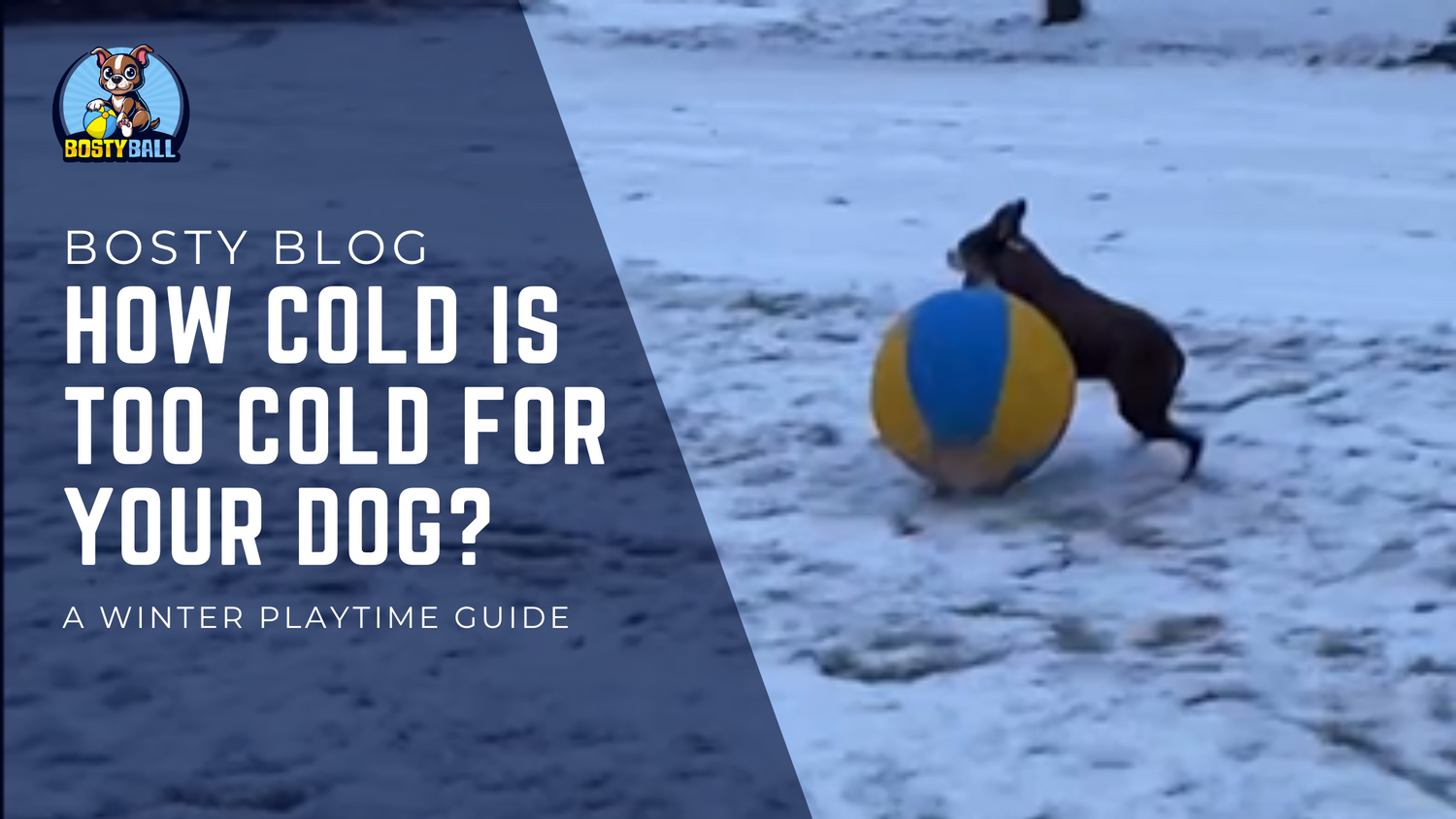Winter doesn’t mean the end of outdoor play—but when temperatures drop, it’s natural to wonder: how cold is too cold for your dog to be outside?
While some breeds thrive in the snow, others can’t handle even a slight chill. In this guide, we’ll break down what temps are safe, what signs of discomfort to watch for, and how to keep your pup active when it’s just too cold to venture outside.
What Temperature Is Too Cold for Dogs?
There’s no one-size-fits-all answer, but here’s a general guideline:
| Temperature (°F) | Risk Level | What to Know |
|---|---|---|
| 50°F+ | Safe | Most dogs are totally fine; no precautions needed. |
| 45–32°F | Low Risk | Small, short-haired, or senior dogs may start to feel chilly. |
| 32–20°F | Moderate Risk | Time to monitor closely. Cold-sensitive dogs could be uncomfortable. |
| 20–0°F | High Risk | Limit outdoor time. Watch for signs of hypothermia or frostbite. |
| Below 0°F | Dangerous | Avoid outdoor play. Potty breaks only—and keep them short. |
Breed and Size Matter
Some dogs are built for the cold. Others? Not so much.
Cold-Tolerant Breeds:
-
Siberian Huskies
-
Alaskan Malamutes
-
Bernese Mountain Dogs
-
Newfoundlands
These dogs have thick double coats and larger body mass, which helps retain heat.
Cold-Sensitive Breeds:
-
Chihuahuas
-
Greyhounds
-
Boston Terriers
-
French Bulldogs
-
Dachshunds
These pups tend to have thin coats, small frames, or short legs that make them more vulnerable to the cold—especially when snow is on the ground.
Signs Your Dog Is Too Cold
Even if the thermometer doesn’t look that low, your dog may still be uncomfortable. Watch for:
-
Shivering or trembling
-
Whining or reluctance to walk
-
Holding up paws (due to ice or cold)
-
Hunched posture or tail tucked
-
Seeking shelter or trying to turn back
If you notice any of these signs, it’s time to head inside and warm up.
How to Keep Dogs Safe During Winter Play
Here’s how to make outdoor fun safe—even when it’s cold:
-
Bundle up short-haired dogs. Dog jackets or sweaters can help retain body heat.
-
Protect paws. Use paw wax or dog boots to prevent ice buildup and salt irritation.
-
Shorten play sessions. Take more frequent breaks inside to warm up.
-
Stay dry. Wet fur loses insulation—dry your dog off after snow or rain.
-
Watch the wind. Wind chill can make temps feel colder than they are.
Indoor Play Ideas for Cold Days
When it's just too cold to play outside, indoor enrichment becomes even more important. Here are a few ideas to burn off energy without freezing your tail off:
-
Puzzle toys and treat-dispensing games
-
Indoor fetch with soft or bounce-safe toys
-
Tug-of-war
-
Hide-and-seek (with toys or treats!)
-
Training new tricks for mental stimulation
Try a Herding Ball Indoors or in Light Snow
The Bosty Ball is designed for high-energy play—and while it shines outdoors, it's also a great option for indoor fun (in larger spaces) or safe backyard snow play.
Because it’s not a chew toy, it encourages dogs to herd, chase, and engage mentally—making it ideal for winter days when full-on fetch might not be safe.
Final Thoughts
Cold weather doesn’t mean your dog has to hibernate—but it does mean you need to be more mindful of the temperature, your dog’s breed, and their behavior.
Keep an eye on the weather, adjust your play routines, and make the most of indoor games when the temps dip too low. Your dog’s body (and paws) will thank you.

